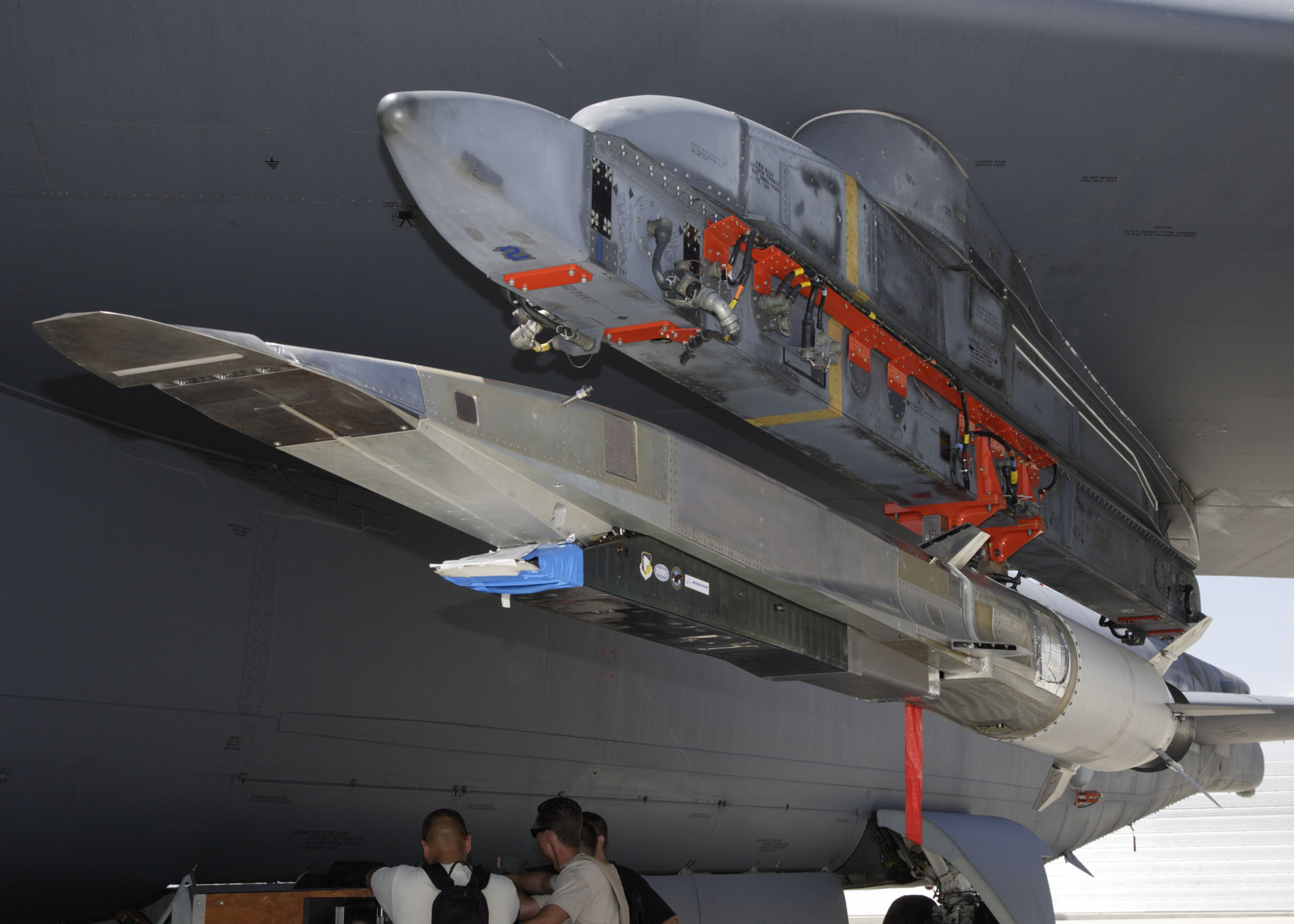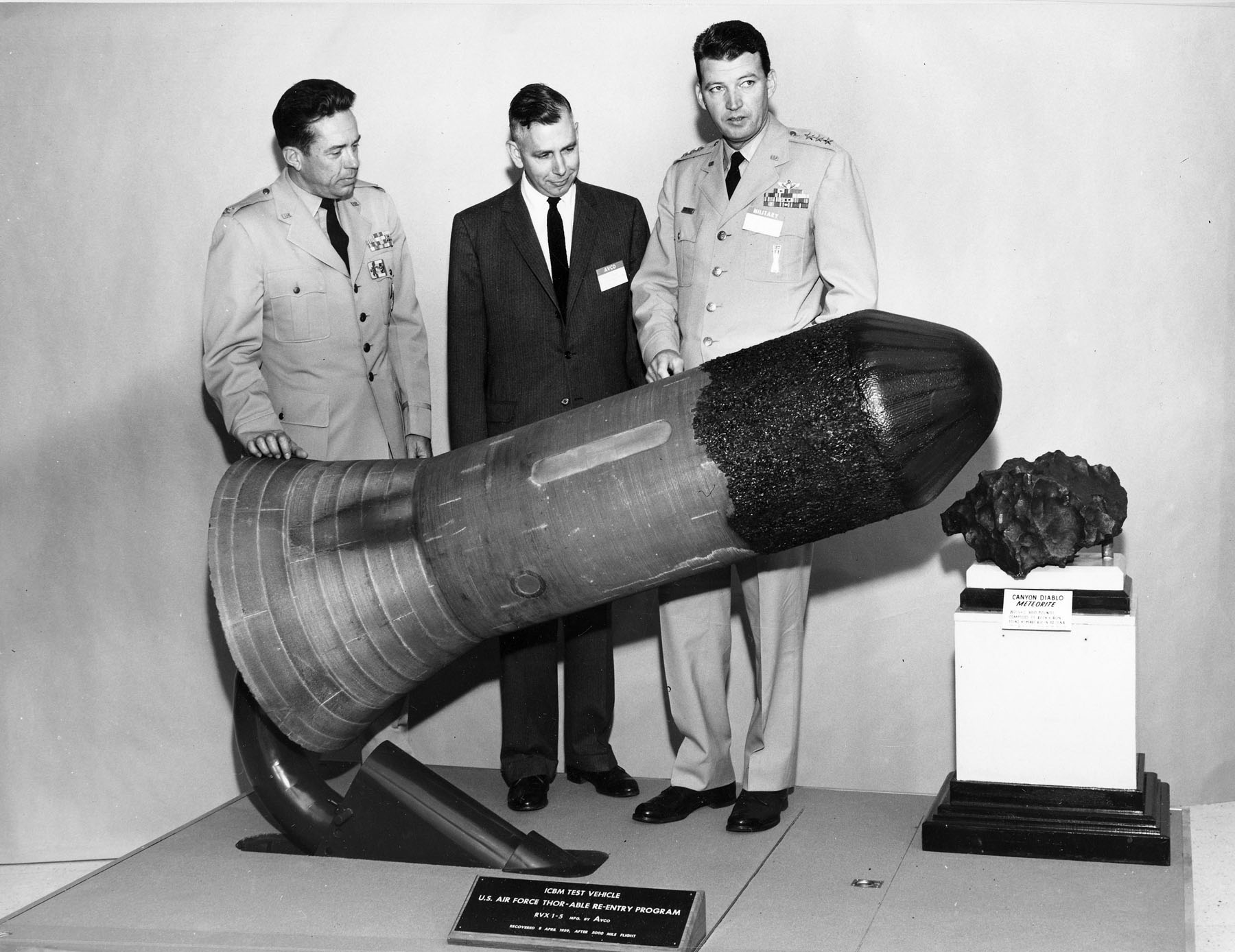|
Waverider
A waverider is a hypersonic aircraft design that improves its supersonic lift-to-drag ratio by using the shock waves being generated by its own flight as a lifting surface, a phenomenon known as compression lift. The waverider remains a well-studied design for high-speed aircraft in the Mach 5 and higher hypersonic regime, although no such design has yet entered production. The Boeing X-51A scramjet demonstration aircraft was tested from 2010 to 2013. In its final test flight, it reached a speed of . History Early work The waverider design concept was first developed by Terence Nonweiler of the Queen's University of Belfast, and first described in print in 1951 as a re-entry vehicle. It consisted of a delta-wing platform with a low wing loading to provide considerable surface area to dump the heat of re-entry. At the time, Nonweiler was forced to use a greatly simplified 2D model of airflow around the aircraft, which he realized would not be accurate due to spanwise flow ... [...More Info...] [...Related Items...] OR: [Wikipedia] [Google] [Baidu] |
Boeing X-51
The Boeing X-51 Waverider is an Unmanned aerial vehicle, unmanned research scramjet experimental aircraft for hypersonic flight at and an altitude of . The aircraft was designated X-51 in 2005. It completed its first powered hypersonic flight on 26 May 2010. After two unsuccessful test flights, the X-51 completed a flight of over six minutes and reached speeds of over Mach 5 for 210 seconds on 1 May 2013 for the longest duration powered hypersonic flight. ''Waverider'' refers in general to aircraft that take advantage of compression lift produced by their own shock waves. The X-51 program was a cooperative effort by the United States Air Force, DARPA, NASA, Boeing, and Pratt & Whitney Rocketdyne. The program was managed by the Aerospace Systems Directorate within the U.S. Air Force Research Laboratory (AFRL). Design and development In the 1990s, the Air Force Research Laboratory (AFRL) began the Scramjet programs#HyTECH, HyTECH program for hypersonic air propulsion, propulsi ... [...More Info...] [...Related Items...] OR: [Wikipedia] [Google] [Baidu] |
Scramjet
A scramjet (supersonic combustion ramjet) is a variant of a ramjet airbreathing jet engine in which combustion takes place in supersonic airflow. As in ramjets, a scramjet relies on high vehicle speed to compress the incoming air forcefully before combustion (hence ''ram''jet), but whereas a ramjet decelerates the air to subsonic velocities before combustion using shock cones, a scramjet has no shock cone and slows the airflow using shockwaves produced by its ignition source in place of a shock cone. This allows the scramjet to operate efficiently at extremely high speeds. History Before 2000 The Bell X-1 attained supersonic flight in 1947 and, by the early 1960s, rapid progress toward faster aircraft suggested that operational aircraft would be flying at "hypersonic" speeds within a few years. Except for specialized rocket research vehicles like the North American X-15 and other rocket-powered spacecraft, aircraft top speeds have remained level, generally in the range of ... [...More Info...] [...Related Items...] OR: [Wikipedia] [Google] [Baidu] |
Hypersonic Aircraft
Hypersonic flight is flight through the atmosphere below altitudes of about 90 km at speeds greater than Mach 5, a speed where dissociation of air begins to become significant and high heat loads exist. Speeds of Mach 25+ have been achieved below the thermosphere as of 2020. History The first manufactured object to achieve hypersonic flight was the two-stage Bumper rocket, consisting of a WAC Corporal second stage set on top of a V-2 first stage. In February 1949, at White Sands, the rocket reached a speed of , or about Mach 6.7. The vehicle, however, burned on atmospheric re-entry, and only charred remnants were found. In April 1961, Russian Major Yuri Gagarin became the first human to travel at hypersonic speed, during the world's first piloted orbital flight. Soon after, in May 1961, Alan Shepard became the first American and second person to fly hypersonic when his capsule reentered the atmosphere at a speed above Mach 5 at the end of his suborbital flight over the ... [...More Info...] [...Related Items...] OR: [Wikipedia] [Google] [Baidu] |
Terence Nonweiler
Terence Nonweiler (8 February 1925 - 17 December 1999) held a Chair of Aeronautical Engineering at Glasgow University and later became Dean of the Faculty of Engineering. He has been credited with being the pioneer of wave-riding technology.''The Herald'' Tuesday 28 December 1999 Obit:Prof Terence Nonweiler (Accessed August 2012) In January 1957 Nonweiler, and six other enthusiasts (including ) met at the and formed the Man-Powered Air ... [...More Info...] [...Related Items...] OR: [Wikipedia] [Google] [Baidu] |
North American Aviation
North American Aviation (NAA) was a major American aerospace manufacturer that designed and built several notable aircraft and spacecraft. Its products included: the T-6 Texan trainer, the P-51 Mustang fighter, the B-25 Mitchell bomber, the F-86 Sabre jet fighter, the X-15 rocket plane, the XB-70, the B-1 Lancer, the Apollo command and service module, the second stage of the Saturn V rocket, and the Space Shuttle orbiter. Through a series of mergers and sales, North American Aviation became part of North American Rockwell, which later became Rockwell International, and is now part of Boeing. History Early years On December 6, 1928, Clement Melville Keys founded North American as a holding company that bought and sold interests in various airlines and aviation-related companies. However, the Air Mail Act of 1934 forced the breakup of such holding companies. North American became a manufacturing company, run by James H. Kindelberger, James H. "Dutch" Kindelberger, who had bee ... [...More Info...] [...Related Items...] OR: [Wikipedia] [Google] [Baidu] |
XB-70
The North American Aviation XB-70 Valkyrie was the prototype version of the planned B-70 nuclear-armed, deep-penetration supersonic strategic bomber for the United States Air Force Strategic Air Command. Designed in the late 1950s by North American Aviation (NAA), the six-engined Valkyrie was capable of cruising for thousands of miles at Mach 3+ while flying at . At these speeds, it was expected that the B-70 would be practically immune to interceptor aircraft, the only effective weapon against bomber aircraft at the time. The bomber would spend only a brief time over a particular radar station, flying out of its range before the controllers could position their fighters in a suitable location for an interception. Its high speed made the aircraft difficult to see on radar displays and its high-altitude and high-speed capabilities could not be matched by any contemporaneous Soviet interceptor or fighter aircraft. The introduction of the first Soviet surface-to-air missiles i ... [...More Info...] [...Related Items...] OR: [Wikipedia] [Google] [Baidu] |
Wing Fence
Wing fences, also known as boundary layer fences and potential fences are fixed aerodynamic devices attached to aircraft wings. Often seen on swept-wing aircraft, wing fences are flat plates fixed to the upper surfaces parallel to the wing chord and in line with the free stream airflow, typically wrapping around the leading edge. By obstructing span-wise airflow along the wing, they prevent the entire wing from stalling at once, as opposed to wingtip devices, which increase aerodynamic efficiency by seeking to recover wing vortex energy. As a swept-wing aircraft slows toward the stall speed of the wing, the angle of the leading edge forces some of the airflow sidewise, toward the wing tip. This process is progressive: airflow near the middle of the wing is affected not only by the leading edge angle, but also the spanwise airflow from the wing root. At the wing tip the airflow can end up being almost all spanwise, as opposed to front-to-back over the wing, meaning that the ef ... [...More Info...] [...Related Items...] OR: [Wikipedia] [Google] [Baidu] |
Glasgow University
, image = UofG Coat of Arms.png , image_size = 150px , caption = Coat of arms Flag , latin_name = Universitas Glasguensis , motto = la, Via, Veritas, Vita , mottoeng = The Way, The Truth, The Life , established = , type = Public research universityAncient university , endowment = £225.2 million , budget = £809.4 million , rector = Rita Rae, Lady Rae , chancellor = Dame Katherine Grainger , principal = Sir Anton Muscatelli , academic_staff = 4,680 (2020) , administrative_staff = 4,003 , students = () , undergrad = () , postgrad = () , city = Glasgow , country = Scotland, UK , colours = , website = , logo ... [...More Info...] [...Related Items...] OR: [Wikipedia] [Google] [Baidu] |
Royal Aeronautical Society
The Royal Aeronautical Society, also known as the RAeS, is a British multi-disciplinary professional institution dedicated to the global aerospace community. Founded in 1866, it is the oldest aeronautical society in the world. Members, Fellows, and Companions of the society can use the post-nominal letters MRAeS, FRAeS, or CRAeS, respectively. Function The objectives of The Royal Aeronautical Society include: to support and maintain high professional standards in aerospace disciplines; to provide a unique source of specialist information and a local forum for the exchange of ideas; and to exert influence in the interests of aerospace in the public and industrial arenas, including universities. The Royal Aeronautical Society is a worldwide society with an international network of 67 branches. Many practitioners of aerospace disciplines use the Society's designatory post-nominals such aFRAeS CRAeS, MRAeS, AMRAeS, and ARAeS (incorporating the former graduate grade, GradRAeS). ... [...More Info...] [...Related Items...] OR: [Wikipedia] [Google] [Baidu] |
Gold Medal
A gold medal is a medal awarded for highest achievement in a non-military field. Its name derives from the use of at least a fraction of gold in form of plating or alloying in its manufacture. Since the eighteenth century, gold medals have been awarded in the arts, for example, by the Royal Danish Academy of Fine Arts, usually as a symbol of an award to give an outstanding student some financial freedom. Others offer only the prestige of the award. Many organizations now award gold medals either annually or extraordinarily, including various academic societies. While some gold medals are solid gold, others are gold-plated or silver-gilt, like those of the Olympic Games, the Lorentz Medal, the United States Congressional Gold Medal and the Nobel Prize medal. Nobel Prize medals consist of 18 karat green gold plated with 24 karat gold. Before 1980 they were struck in 23 karat gold. Military origins Before the establishment of standard military awards, e.g., the Medal of Honor, ... [...More Info...] [...Related Items...] OR: [Wikipedia] [Google] [Baidu] |
Royal Aircraft Establishment
The Royal Aircraft Establishment (RAE) was a British research establishment, known by several different names during its history, that eventually came under the aegis of the Ministry of Defence (United Kingdom), UK Ministry of Defence (MoD), before finally losing its identity in mergers with other institutions. The first site was at Farnborough Airfield ("RAE Farnborough") in Hampshire to which was added a second site RAE Bedford (Bedfordshire) in 1946. In 1988 it was renamed the Royal Aerospace Establishment (RAE) before merging with other research entities to become part of the new Defence Research Agency in 1991. History In 1904–1906 the Army Balloon Factory, which was part of the Army School of Ballooning, under the command of Colonel James Templer (balloon aviator), James Templer, relocated from Aldershot to the edge of Farnborough Common in order to have enough space to inflate the new "dirigible balloon" or airship which was then under construction.Walker, P; Early Avi ... [...More Info...] [...Related Items...] OR: [Wikipedia] [Google] [Baidu] |






